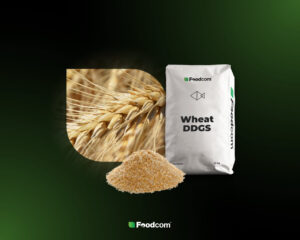We hope you are doing fine, even though the weather in many parts of Europe is extraordinary. It sure will have an impact on the dairy market.
Let’s see how it influenced dairy products last week!
Let’s get straight to business!
Continue reading to learn about this week’s market insights.
With us, you’ll never miss a thing!
Butter
There are not many buyers in today’s market, especially since they hear about lower prices every day. Even if there should be less milk on the market, Butter is under extreme pressure to be lower than the current level. On the other hand, the cost of production is not getting lower and when you receive an invoice from the cold store, you will not be satisfied.
Skimmed Milk Powder
Many producers see no point in liquidating their milk into powder at the current prices that they receive from buyers. We hear that some of the major producers have stopped their drying towers and switched to other products.
Gouda/Edam
Cheese prices have dropped a bit in the last week. They were a very popular product, but the popularity has waned slightly. It is still not easy to find the product with prompt shipping, but many customers see that they can secure the product at better prices in the long run.
Whey Protein Concentrate 80%
The hottest product in the Dairy category. The price has increased to 5,50-5,80 €/kg EXW in some countries. However, this kind of price rise at the same time causes resistance among buyers. We all have to remember that a few months ago this commodity was traded far above current prices.
Cream
The price of Cream remained stable in Central Europe but increased somewhat due to hot weather and higher consumption. Milk saw a price rise throughout Europe. For Skimmed Milk Concentrate, it is stable compared to previous weeks.
Europe
Poland’s dairy industry is facing a crisis.
The Polish dairy market has reached its lowest level in years, – putting farmers on edge. We can see that milk prices are falling and will continue to fall. To some extent, the current crisis is a result of the Covid 19 pandemic, as lockdowns in Europe boosted demand in the dairy market. In 2023, consumer habits return to those before the pandemic, while an increase in production costs accelerates inflation. In addition, consumption of most dairy products in Poland is very low this year.
Possible farm closures following milk processors’ price cuts in the UK.
The amount most British farmers receive for their milk has fallen below their cost of production, deepening concerns about the viability of small dairy farms. Arla and Muller, the two largest U.K. milk processors, have cut their producer price for five consecutive months, with Arla holding the price at 35 pence (44.42 cents) per liter in June and July.
Will imports of Swiss cheese exceed exports this year?
Switzerland may have to import more cheese this year than it exports, according to the country’s Dairy Association. That would be a rapid turnaround, as exports of Swiss cheese were up 7.9% as recently as last year. Historically, the country has protected its milk producers with subsidies and import controls, but in recent years it has gradually opened its dairy markets to foreign competition. This is putting pressure on Swiss producers, according to the Association.
The Americas
Truckloads of fresh milk from farms are being dumped in Wisconsin sewers.
This is a crisis because dairy farming is Wisconsin’s largest single agricultural project. One of the organizations confirms that truckloads of milk from dairy farms have recently been sent through the sewage system after being treated at a waste disposal company. Milk disposal is used as a ’last resort’ when there’s nowhere else for the product to go. Nearly 90% of Wisconsin’s milk is processed into cheese. There are those who believe that disposing of milk down the drain is a sign that the dairy industry is out of balance.
California may lose its leading position in the U.S. Dairy market.
After a successful dairy year in 2022, U.S. milk production was predicted to slow this year, with lower milk prices and more competition in export markets. U.S. milk production was stable in 2022 at 102.7 million tons. It has increased steadily since 2010. It’s expected to continue to rise, but at a slightly lower rate than in previous years. In early 2023, there is a slowdown in milk production growth and a fall in milk prices, which remains historically high. Feed costs are stable and margins for farmers are deteriorating.
Dairy animals battling the heat at Fresno State (Calif.).
With triple-digit temperatures looming over the Central Valley, Fresno State College’s Dairy Science Unit has decided to take steps to protect the university’s animals. A ‘soaker’ water spray system is being used to cool the animals. The system is designed to soak past the hair and even provide some evaporative cooling, according to the Dairy Unit Enterprise Manager. The College Dairy also uses variable-speed fans to aid in the cooling process. The two cooling systems work together to lower the temperature of their shelter and protect the cows.
Asia & Oceania
Chinese demand for dairy products persists, driving up global milk prices.
Senior agricultural economist at Westpac NZ, expects Chinese demand for dairy products to persist and drive up global prices. Overall and key whole milk powder (WMP) prices were stable. By product, prices were more mixed. Milk fat prices recorded solid gains, with butter prices up 5.5%. Skim milk powder and cheddar prices fell 2.3% and 3.3%, respectively. Looking ahead, economist sees 2 possible circuit breakers. One is the long-awaited rebound in Chinese demand for dairy products, and the other is the spring production of dairy products in New Zealand.
The cost of milk in Australian supermarkets will rise.
The Australian Dairy industry has shrunk in recent decades. Producers have dropped out because they could no longer get good returns for their milk. That means there is less supply to meet consumer demand. Those who stayed behind had to contend with sharply higher production costs, years of stagnant milk prices and difficult weather conditions. Milk prices on the shelves had remained stable for 10 or 15 years or more. However, the newest data shows that the price of dairy and related products increased 15.1% between May 2022 and May 2023.
Ice cream prices in South Korea are rising as summer approaches.
It is becoming more expensive to buy ice cream and other dairy products. This is related to raw milk prices, which keep rising. Producers of these products predict that costs of buying raw milk will increase even more in August. They claim that this could make it more difficult for them to keep their own prices reasonable. The Korea Dairy Committee is negotiating an increase in the price of raw milk and processed milk used to make powdered milk, cheese and ice cream as early as August 1. This means that the price of raw milk will increase by 6.9%, the highest margin ever.







